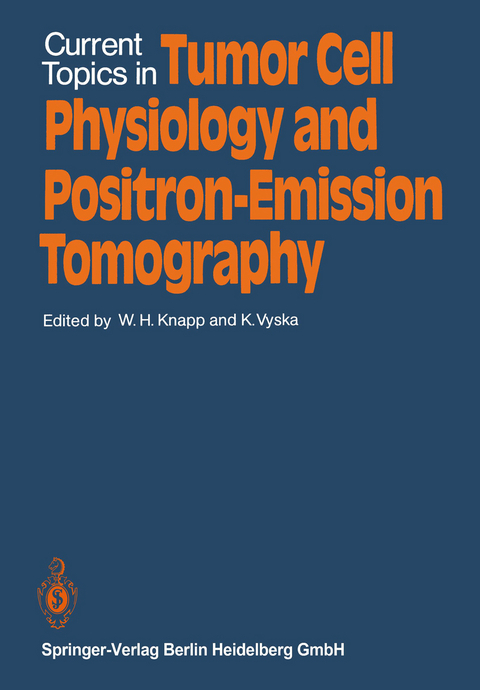Current Topics in Tumor Cell Physiology and Positron-Emission Tomography
Seiten
1984
Springer Berlin (Verlag)
978-3-540-13007-9 (ISBN)
Springer Berlin (Verlag)
978-3-540-13007-9 (ISBN)
About ten years aga devices and equipment were developed for producing quantitative images in vivo of the distribution of substanees with positron emitting radionuclide label of very short half-life (down to only several minutes). The positron-emitting isotopes can be the most important bio elements and are, therefore, suitable for the labeling of important physio logie substrates like sugars, amino acids ete. and their synthetic analogues. Their imaging, after distribution in vivo, is being performed by PET scan ning systems. It soon became apparent that positron-emission tomography could be very useful in the field of cancer biology, diagnostics and therapy. Trans port, influx and efflux, metabolism of suitable labeled substrates around and in tumors can be followed over aperiod oftime, thus allowing the - calization oftumors and - equally important - the efficiency (or non-effi ciency) of any given therapeutic regimen. For this purpose 13N-Iabeled amino acids, especially glutamate, or l1C_ and 18P-labeled glucose deri vates were introduced and are already being recommended for the study of special tumors in experimental animals and man, such as brain tumors or osteosarcomas. Some glucose derivatives were developed which differ in their metabolie (enzymatic) fate. In this way, combined application of compounds, like [18F]-2-fluoro-2-deoxy- and rtC]-3-0-methyl-D-glucose are "expected to provide the most important imaging in tumor diagno stics" (M. Hatanaka). In principle, tlJmor chemotherapy and other therapeutic approaches can now be followed continuously.
Metabolic and Transport Alterations in Cells Transformed by Rous Sarcoma Virus.- Some Tumour Markers in Malignant and Non-Malignant Hybrid Cells.- D-Glucose Transport in Oncogenic Transformation.- In Vivo Determination of Kinetic Parameters for Glucose Influx and Efflux by Means of 3-0-11C-Methyl-D-Glucose, 18F-3-Deoxy-3-Fluoro-D-Glucose and Dynamic Positron Emission Tomography; Theory. Method and Normal Values.- Physiological Conditions and Methodological Prerequists for the In-Vivo Measurement of Substrate Transport in Tumors.- Diagnostic Demands in Clinical and Experimental Oncology: Application of Substrates Labeled with Positron-Emitting Radionuclides.- Labeling of Organic Compounds with Positron Emitters.
| Erscheint lt. Verlag | 1.4.1984 |
|---|---|
| Vorwort | O. Westphal |
| Zusatzinfo | XII, 104 p. 31 illus., 2 illus. in color. |
| Verlagsort | Berlin |
| Sprache | englisch |
| Gewicht | 235 g |
| Themenwelt | Medizin / Pharmazie ► Medizinische Fachgebiete ► Onkologie |
| Studium ► 1. Studienabschnitt (Vorklinik) ► Physiologie | |
| Naturwissenschaften ► Biologie ► Humanbiologie | |
| Schlagworte | Cell • Diagnostics • Emission • Imaging • Krebs • Physiology • Schichtaufnahmeverfahren • Tomography • Tumor • Zytologie |
| ISBN-10 | 3-540-13007-1 / 3540130071 |
| ISBN-13 | 978-3-540-13007-9 / 9783540130079 |
| Zustand | Neuware |
| Haben Sie eine Frage zum Produkt? |
Mehr entdecken
aus dem Bereich
aus dem Bereich




